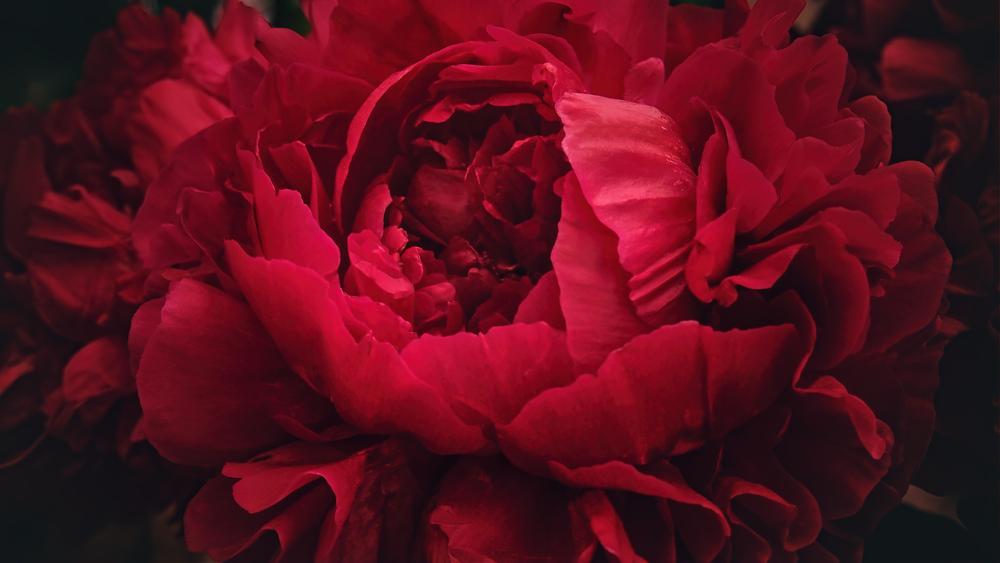Our churches often use an expression to describe an interesting view of Christians journeying straight from the Poinsettias of Christmas to the Lilies of Easter without facing up to the dreadful way Jesus died on the cross.
I don’t know who invented the phrase, but I have invented a similar phrase for this time after Easter when we are now travelling on the Path to Pentecost.
On the Path to the Red Peonies Pentecost
Pentecost is traditionally symbolised by the red Peony, also known as Mary’s rose. So let us now start travelling from the Lilies of Easter to the Red Peonies of Pentecost by reflecting on God’s immense power, which was so forcefully demonstrated in Christ’s resurrection.
Jesus Wanted People to See the Power of God in His Resurrected Body
The list of God’s power on display down the ages is endless, but the resurrection of Jesus is his most significant and marvellous display of power yet.
In his ministry, Jesus generally kept a low profile and carefully avoided saying he was the Messiah. But now, he was happy to show he had been raised from the dead, as he said he would be. I believe this was to demonstrate the power of God in his resurrected body and reinforce the start of the Christian movement.
It also provided evidence that would be recorded for those who followed, including us today, to help prove the resurrection happened and better understand the reality of it.
St Luke’s gospel describes how Mary Magdalene encountered the risen Christ in the gardens and thought he was the gardener at first.
Christ also appeared to two unknown disciples on the road to Emmaus and many times to his closest disciples and also a congregation of 500 unknown to us people., as he journeyed, in his risen body, on the path to Pentecost.
Sensing God in Nature
Like many aspects of faith, the resurrection of our bodies after death is hard to understand and accept. But nature can guide us in scripture’s most difficult questions when all else fails. God’s creation displays many patterns of death and renewal.
Last summer’s drought is a typical example of how God displays his character of resurrection to us when England recorded some of its hottest days ever over eight scorching weeks.
The grass in our local park lay flattened like scorched dry straw, and trees hung limp and dusty. Rivers dried up, and my dog Bennie got trapped in the roots of the lake’s plant life.
I honestly thought it was all over for him, and no one was there to help us. I am not ashamed to say I cried out to God for help.
Then as I began to turn away, thinking the current had swept Bennie away, God showed he was good, and somehow Bennie suddenly leapt up from the sunken weeds of the riverbed, like something out of the film Jaws, and onto the banks of the river.
The heatwave was a nightmare at so many different levels for many, then finally, rain, five hours of heavy rainfall – talk about manna from heaven.
Everything smelled fresh after the rain, and there was already a sense of renewal and new beginnings.
Then, after just a few days, bright green blades of grass started to appear strikingly against the drab, seemingly dead lawns. Within a week a third of the lawns were ablaze with emerald-green life. The power of God’s rain had renewed them.
Reflecting on The Resurrectional Character of God
Watching the transformation in nature over a short time from dry, dead, and dull — to hope, life, and glory was quite magical for me and many others I spoke to.
It made me think of how the natural world reflects the very essence of God’s resurrectional character.
For example, a seed must die to itself to germinate and become all that it is. An acorn must destroy itself as it grows and explodes into a sapling and, eventually, a giant oak tree.
Likewise, we must die to our own will and, eventually, our physical bodies so that we may be renewed to be all God intends for us.

The Path from the White Lilies of Easter to the Red Peonies of Pentecost
After a particularly cold and dark winter, we can now see God demonstrating his resurrectional and renewing power as it bursts through in stunning spring blossoms, buds and bulbs all around us.
As we travel on the path from the Lilies of Easter to the Peonies of Pentecost, let us gaze in awe and wonder as we watch nature renew itself in dazzling splendour.
Then let us then give thanks and praise to our omnipotent God, who can renew and resurrect all life he created, as and when he chooses to.





